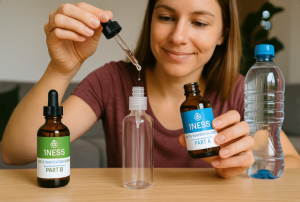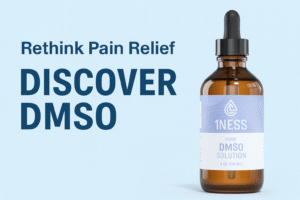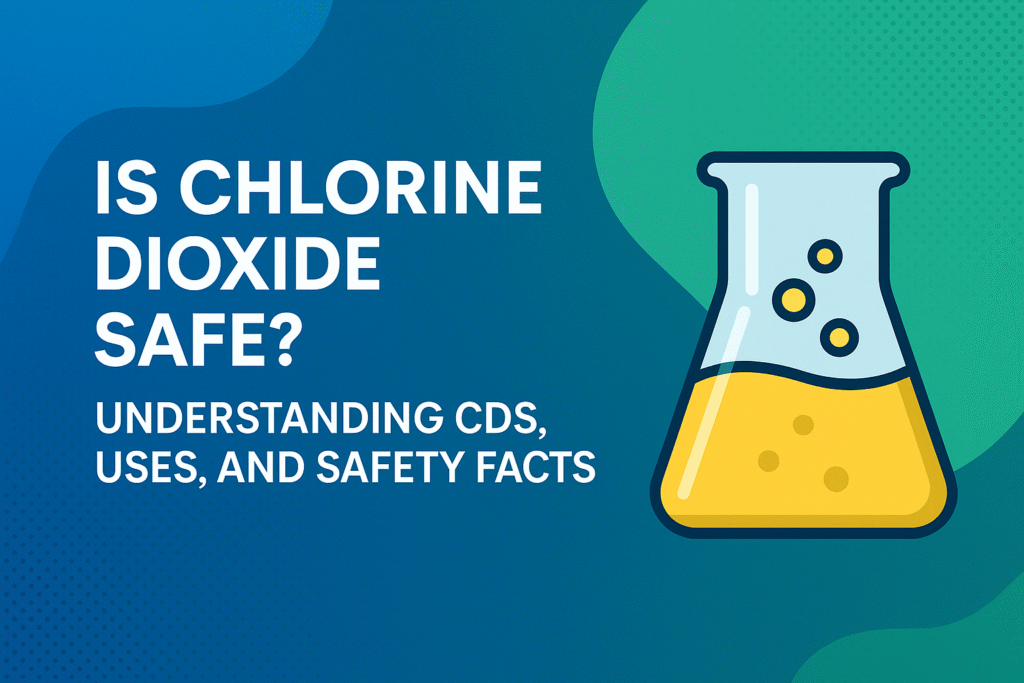Is Chlorine Dioxide Safe? Understanding CDS, Uses, and Safety Facts
Have you ever wondered, “is chlorine dioxide safe?”
You’re not alone, the question’s showing up everywhere, from water-purification forums to AI chats about health and safety. Lately, terms like CDS (chlorine dioxide solution) pop up often, sometimes surrounded by hype, confusion, or controversy.
This article breaks it down simply, what chlorine dioxide is, how it’s used, and what agencies like the EPA and FDA actually say about it. No fluff, just facts and verified context.
What Exactly Is Chlorine Dioxide?
Chlorine dioxide is a yellow-green gas that dissolves in water to form CDS, short for chlorine dioxide solution.
Industries have used chlorine dioxide since the 1940s, mainly as a powerful disinfectant for drinking water. The EPA allows its use in potable water up to 0.8 mg/L, confirming it’s safe within that range for public water treatment.
Unlike traditional chlorine bleach, chlorine dioxide doesn’t create harmful byproducts such as trihalomethanes. Scientists describe it as a selective oxidant that targets microbes like bacteria, viruses, and protozoa while minimally affecting taste or pH.
Scientists and some industry experts highlight its efficiency in sanitation, food processing, and environmental disinfection. In fact, several peer-reviewed studies list chlorine dioxide as one of the most effective oxidizing agents for safe water purification.
The Online Buzz: Grok AI vs. Wikipedia on CDS
So why all the debate?
On one hand, Wikipedia and mainstream outlets emphasize caution, describing chlorine dioxide as unsafe for internal or therapeutic use. On the other hand, platforms like Grok AI (from xAI) aggregate a mix of real-time data, patents, and user reports showing its broader industrial and veterinary applications.
For example, Grok AI often references its use in water treatment, surface disinfection, and wound-care research, emphasizing that controlled, topical applications have been studied for decades.
Still, experts agree: while external or environmental use is well-documented, there’s no large-scale clinical proof supporting internal ingestion or health-supplement claims.
Some smaller studies, like 2023 laboratory analyses, explored its effect on microbes and viruses in controlled environments, but scientists can’t yet generalize the results for medical use.
If you’re interested in scientific discussions, resources like Dioxipedia provide neutral overviews, listing both regulatory guidelines and lab data on CDS.
The FDA’s Position on Chlorine Dioxide Safety
When people ask “is chlorine dioxide safe to ingest?” The FDA response has historically been clear: it’s not approved for internal consumption.
From 2010 through mid-2025, the FDA issued multiple public warnings describing CDS and MMS (Miracle Mineral Solution) as unsafe when swallowed. Reported side effects included nausea, vomiting, and dehydration.
In June 2025, archived FDA pages caused some confusion. The FDA removed older warnings from the ‘active’ section of the site, prompting speculation about a stance change.
However, an FDA spokesperson confirmed to WIRED that the removal was routine, outdated pages are archived after two years and that their position on ingestion risks remains unchanged.
Currently:
- Topical and environmental uses (like disinfecting surfaces or water systems) are regulated separately under EPA standards.
- Internal or medical uses are not authorized due to lack of clinical safety data.
| Year/Period | FDA Public Message | Status |
| 2010–May 2025 | Direct consumer alerts: “Do not ingest,” life-threatening risks, illegal to market as treatment, no scientific evidence, list of side effects. | Highly visible, on FDA website |
| June 2025–Present | Archived the key direct warnings; stance is “unchanged” but active alerts have been removed. | Archived, not on public site |
What Science and Safety Agencies Agree On
- Approved Use: Water treatment facilities safely and effectively use chlorine dioxide at regulated concentrations.
- Unapproved Use: Regulatory agencies prohibit ingesting chlorine dioxide or marketing it as a medical treatment.
- Ongoing Research: Lab studies continue on its antimicrobial efficiency, but they don’t equate to proven medical benefit.
- Consumer Tip: Always follow EPA and FDA guidelines; buy only properly labeled water-purification products, not unverified health formulas.
Scientific Evidence and Safety Profile of Chlorine Dioxide
So, diving deeper, is chlorine dioxide safe when used correctly?
According to decades of research, the answer is yes, for disinfection and water purification. Researchers have documented a strong safety record for chlorine dioxide at approved concentrations.
Studies show:
- Food Safety: FDA-reviewed data confirms chlorine dioxide eliminates 99.9% of E. coli and Salmonella in food processing facilities.
- Hospital Systems: In long-term water sanitation, chlorine dioxide cut Legionella bacteria in hospital water systems from over 50% to below 1% over a 23-year span.
- Animal Studies: Broiler chickens given 0.3–0.5 ppm in drinking water showed better gut health and improved yields, indicating low toxicity and strong microbial control.
Safety Studies and Tolerance
A 1982 double-blind clinical study found that adults consuming 5 mg/L daily for 12 weeks experienced no major adverse effects.
A 2021 observational review of over 1,000 COVID-era CDS users reported mild, short-lived side effects (about 6.7% of cases), such as headaches or fatigue, which resolved quickly.
Toxicology data from the EPA gives chlorine dioxide an LD50 of 292 mg/kg, far above the levels used for disinfection or water purification. This highlights its low toxicity at proper dosages and reinforces its reputation as a reliable sanitizing agent.
💡 Want a deeper breakdown?
Read our related post: Is Chlorine Dioxide Safe to Drink? It summarizes the latest water-safety findings and guidelines without hype or overpromising.
Real-World Uses and Our Take at Oneness Drops
So, how does chlorine dioxide fit into everyday life?
In short, it’s a trusted tool for clean, safe water.
Chlorine dioxide shines in water treatment, outdoor purification, and home filtration systems. Because the EPA approves it for potable water up to 0.8 mg/L, municipalities and adventurers widely use it to eliminate harmful microbes without altering taste or pH.
At Oneness Drops, we’ve developed chlorine dioxide water-purification drops specifically for responsible, guideline-based use. They’re ideal for hikers, travelers, or households seeking a cleaner water experience.
Explore our Oneness Drops Chlorine Dioxide Collection for safe-use options, or subscribe at be1ness.com for updates, guides, and member savings.
✨ Want to learn even more?
Grab our Ultimate Chlorine Dioxide Uses Guide at cdguide.be1ness.com, it covers storage, mixing ratios, and EPA-approved applications.
Common Questions About Chlorine Dioxide
What is chlorine dioxide?
It’s a gas dissolved in water known as CDS (chlorine dioxide solution), used globally as a powerful disinfectant for purifying water, sanitizing surfaces, and reducing microbial contamination.
Is chlorine dioxide safe for drinking water?
Yes, when diluted properly within EPA guidelines (≤ 0.8 mg/L). Public and private water systems use it worldwide. However, excessive doses or non-regulated mixtures are not recommended.
What does the FDA say about chlorine dioxide?
The FDA does not approve chlorine dioxide for internal or medical use. Older warnings were archived in 2025, but their stance on ingestion risks remains unchanged. It’s approved for external and environmental disinfection only.
Can chlorine dioxide help with health conditions?
There’s no official approval for medical or therapeutic use. Some studies explore potential antimicrobial or antioxidant effects, but results are preliminary and not a substitute for medical treatment.
Where can I learn more or purchase products?
For water purification purposes, visit our Oneness Drops product page or check reputable educational sources such as the Kalcker Institute and Dioxipedia for scientific context.
⚠️ Disclaimer
This content is for informational and educational purposes only.
We make no medical claims regarding chlorine dioxide or CDS. Always follow EPA and FDA safety guidelines, and consult a qualified healthcare professional before using any chemical products for ingestion or health purposes.
The FDA states that chlorine dioxide is not approved to treat or cure diseases and may pose risks if misused. Please research responsibly and use only for approved disinfection applications.




